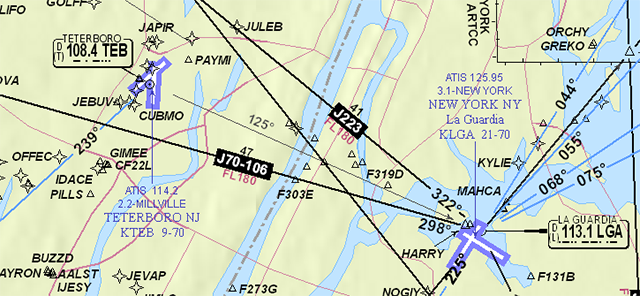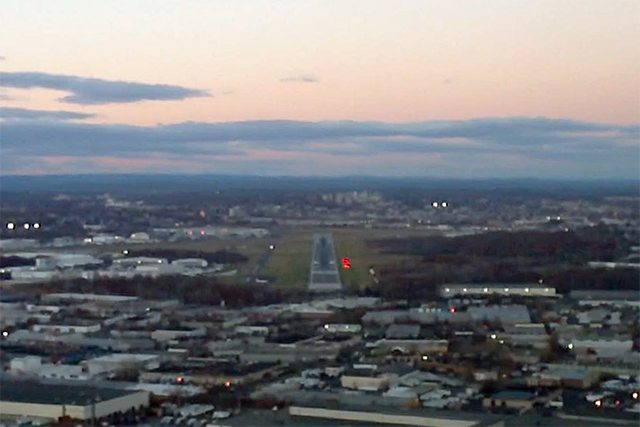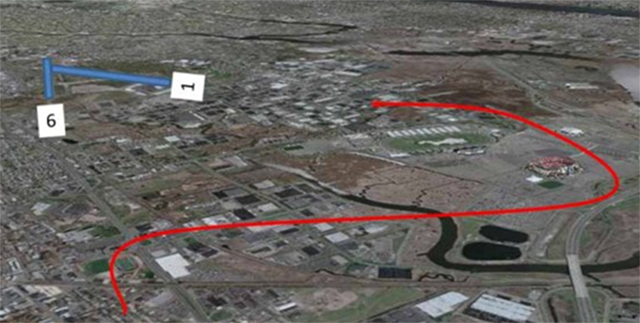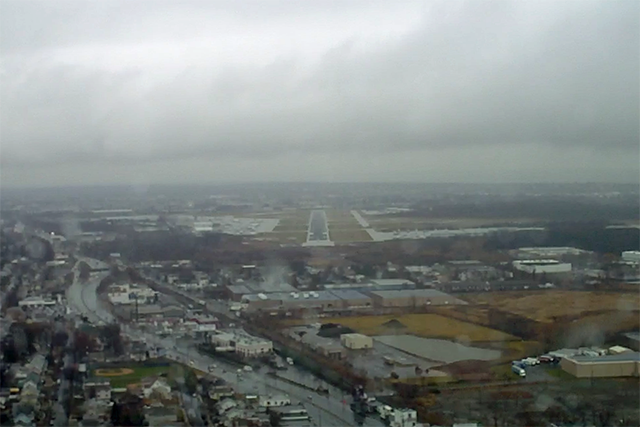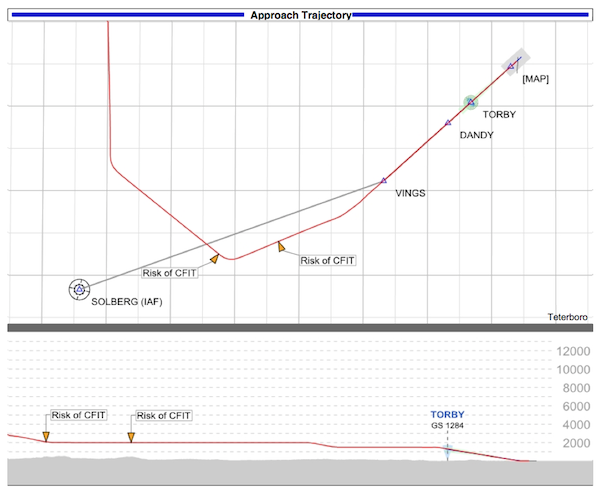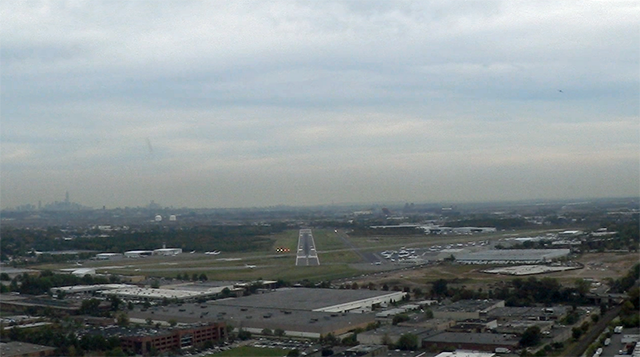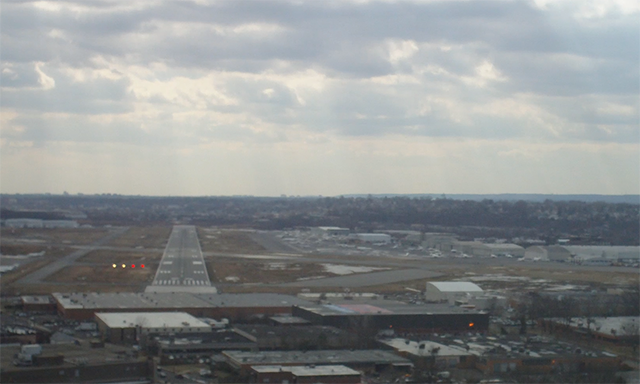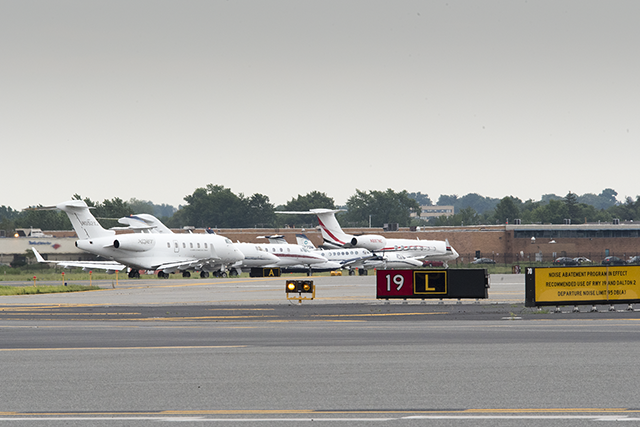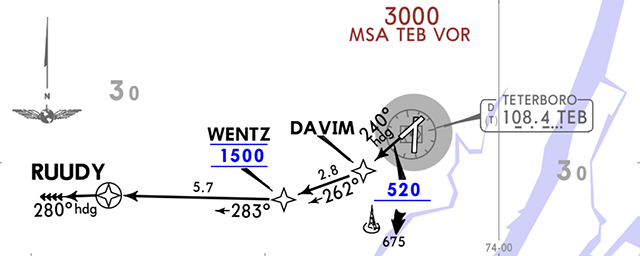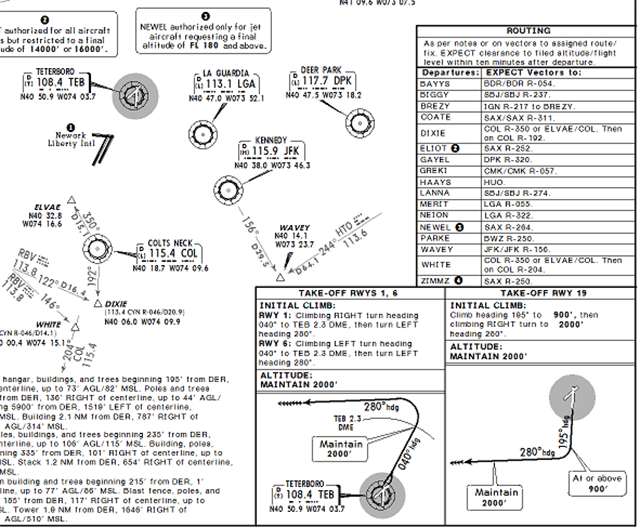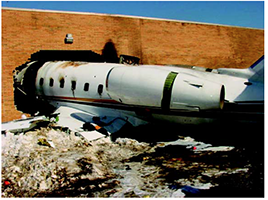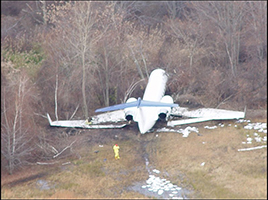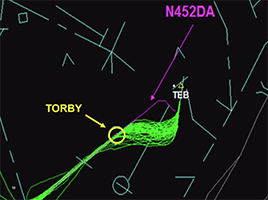If you've never flown to or from Teterboro, I recommend you get to know a few things about the airport, listed in the various "considerations" sections below. If you are lucky and the traffic is light and the weather cooperates, you might wonder what all the fuss is about. But on most days, Teterboro demands your "A Game."
— James Albright

Updated:
2022-03-03
What's all the fuss about? Make sure you understand your aircraft's gusty crosswind procedures. Make sure you carefully study each instrument procedure. Make sure you know your aircraft's noise limitations and abatement procedures. And even if you are a pro at circling, realize that circling at Teterboro is not like circling in the simulator. That might be the biggest consideration of all.
And don't forget:
The Teterboro Circling Conundrum
Conundrum. noun. a confusing and difficult problem or question.

1
Overall considerations
Curfew
"Voluntary restraint of non-essential aircraft operations during the hours of 11 p.m. and 6 a.m." reference the Teterboro Noise Office (201) 393-0399.
Customs
Teterboro has a robust customs office capable of handling multiple airplanes very quickly, you just have to know the protocols. You can download those protocols right here: Teterboro Airport Customs Procedures.
La Guardia Conflict
Teterboro is a very busy airport with lots of IFR pitfalls, congested airspace and ever more congested ramp space. Every now and then there is flow control and you can't expect to be allowed to start engines when you hoped. (Listen carefully to the ATIS.) You need to have your act together for this airport.
La Guardia is just five miles away and if KLGA is landing on runway 13, KTEB will actually shutdown indefinitely. This is rare, but I have seen this happen once.
Noise Considerations
From the Gulfstream Noise Information Manual: "A voluntary ban on all Stage 2 aircraft operations at all times is in effect. Runway 24 is the noise sensitive runway, and noise violations are issued to aircraft that exceed the noise limit by 1 dB on departure. A noise violation lasts for two years, and if an aircraft received three violations in a two year period, that aircraft will be banned permanently from the airport. Additionally, a voluntary ban on all non-essential operations between 2300 – 0600 local is in effect. Gulfstream recommends that Quiet Flying procedures are used at all times for both arrivals and departures."
"A departure noise limit of" [is in effect]:"
- 80.0 dB(A) from Runway 24, during 2200 – 0700 local
- 90.0 dB(A) from Runway 24, 0700 – 2200 local *
- 95.0 dB(A) for Runways 01, 19 and 06, at all times.
The airport publishes 2300, not 2200.
* Note: the Teterboro Airport Quiet Flying Program provides for two exceptions to the Runway 24 noise restriction:
- If Runway 19 is officially closed, by NOTAM, the applicable maximum noise level for Runway 24 shall be 95 dB(A).
- If the cross-wind component existing at the time of an intended Runway 19 takeoff exceeds the maximum allowable cross-wind component as listed in the operator's handbook for the aircraft being used, the applicable maximum noise level for Runway 24 shall be 95 dB(A).
There is a third exception. From the Teterboro Noise Abatement Manager:
- Pilots can request a flight test, or "noise plot", for the purpose of evaluating their noise abatement procedures. Pilots can use plots for two different departures without the risk of a noise violation if they exceed the noise limit. To request a plot simply contact the Noise Office at (201) 393-0399 or noiseoffice@teb.com prior to departure. You can also contact the Ops department. Noise Office staff will contact you with your noise reading within 1-2 business days. After the first two plots, pilots can continue to request plots for their own information (since aircraft performance varies based on atmospheric conditions and weight) although they will be subject to a violation if they exceed the limit.
Teterboro is also pretty good about updating its information here: https://whispertrack.com/airports/KTEB.
2
Arrival considerations
"Circling"
You will often be asked to circle when the weather is good and approaches are being made to either Runway 01 or 24. It is important to realize tower does not expect you to keep the aircraft within normal circling radius and at the circling MDA. Tower will quite often instruct you at what point to begin maneuvering, usually outside of your approach category radius but easily inside the airport traffic area. As for altitude, there is no need to hug the MDA. As stated here:
It is important to remember that circling minimums are only minimums. If the ceiling allows it, fly at an altitude that more nearly approximates VFR traffic pattern altitude. This makes any maneuvering safer and brings the view of the landing runway into a more normal perspective.
Source: FAA-H-8083-15B, Page 10-20
When you are told to "circle to runway one" or "circle to runway two four" you are not being told to keep the airplane within published circling radii or the posted visibility minimums. You are being told to visually maneuver from one extended centerline to another. This is critical! More about this: The Teterboro Circling Conundrum.
Runway 01
There are no instrument approaches to Runway 01, though it is often used for arrivals. Arrival usually entails an ILS 06, Circle 01, done outside normal circling airspace starting at TORBY to avoid Giant Stadium:
Runway 01 has a 3.46° VASI.
Video: Teterboro ILS Rwy 06 Circle Rwy 01
Runway 06
There is an ILS to Runway 06 with a mandatory crossing restriction to cross DANDY at 1500' which seems to catch more than a few pilots.
You may find yourself vectored right down to 2,000 feet for an early intercept. It may have something to do with traffic at Newark (KEWR) or controller workload. But if you find yourself there don't be surprised to see the radio altimeter creep into view now and then. Our FOQA has flagged this as a CFIT risk but there were no cockpit indications.
Once you've landed, if you need to turn left, you need to either turn off on taxiway L or roll to the end. This from the airport:
- On January 18, [2015] Teterboro Tower will implement a new policy/procedure with respect to aircraft landing on Runway 6. Teterboro's unique runway and taxiway geometry has previously necessitated the "hold short of Runway 1" instruction when turning off at taxiway B, occasionally creating pilot confusion and the potential for a runway incursion. After extensive time and motion study, Teterboro Tower has concluded that both efficiency and safety will be enhanced by instructing aircraft bound for FBOs on the west or south sides of the field to exit Runway 6 at the runway end onto Taxiway A (if landing rollout advances past taxiway L). Such instructions will enable continued operations on both Runways 1 and 6 until a gap exists for the controller to permit one or more aircraft to cross Runway 1 from the taxiway A holding pad.
- Historically, aircraft landing Runway 6 and bound for FBOs on the west or south sides of the field have been instructed to exit on Taxiway B and hold short of Runway 1. While holding short of Runway 1, the tail of the aircraft may continue to extend over the Runway 6 hold line, which is understood and accepted by the controller but may be counterintuitive to pilots.
Video: Teterboro ILS Rwy 06.
Runway 19
The standard arrival used to be the VOR/DME-A, Circle to 19. There were quite a few pitfalls, not the least of which was finding the runway. Once they installed the ILS to 19, it became a bit easier:
Video: Teterboro ILS Rwy 19
But that approach generates noise complaints, so they solved the problem for those on the ground but created a few for us in the air. My recommendation, if offered the KTEB RNAV X 19, insist on the ILS.
Runway 24
Approach: Runway 24 has a 3.25° VASI and the bank building on short final can be intimidating. Visuals can be busy, more often than not you will be circling from Runway 19.
3
Departure considerations
Flow control
In 2019, Teterboro Airport had 173,625 operations (arrivals and departures) which is a big number for a general aviation airport. But that is made even more impressive when you consider its flight paths are intermeshed with Kennedy, Newark, and LaGuardia Airports. It will be a good idea to listen to https://www.liveatc.net/ and "tune in" Teterboro Ground Control. Listen for the terms "gate hold" or "ground stop." When these things happen, you may find yourself waiting for hours for permission to start up. This is likely to happen when the surrounding airports are busy or the weather requires extra spacing between aircraft.
Keep a listening watch on ground control to get a feel for departure delays and possible flow control. The airport can institute delays measured in hours (my record is five) depending on the situations at LaGuardia, Kennedy, and Newark. If there are delays, you may be advised to get in line prior to engine start.
Dalton Departure. The Dalton Departure is a VFR procedure which requires you to depart VFR and pick up the IFR two miles south of the airport. You are kept low to avoid KEWR departure traffic.
Ruudy Departure The Ruudy Departure is the standard fare off Runway 24. You need to prebrief at least two key points:
- Climb to 1500' and intercept the 260° course to WENTZ.
- Cross WENTZ at 1500'
- Climb to 2000' after WENTZ
You will more than likely be vectored and climbed before WENTZ, but not always.
It happens fast.
Teterboro Departure. The Teterboro Departure is fairly straight forward: just a series of turns. You may be given fairly complex instructions to turn and intercept radials. These routings are published on the departure procedure and will help you understand the instructions as you get them, you should study the routing to your first fix before taking off:
References
(Source material)
FAA-H-8083-15B, Instrument Flying Handbook, U.S. Department of Transportation, Flight Standards Service, 2012
